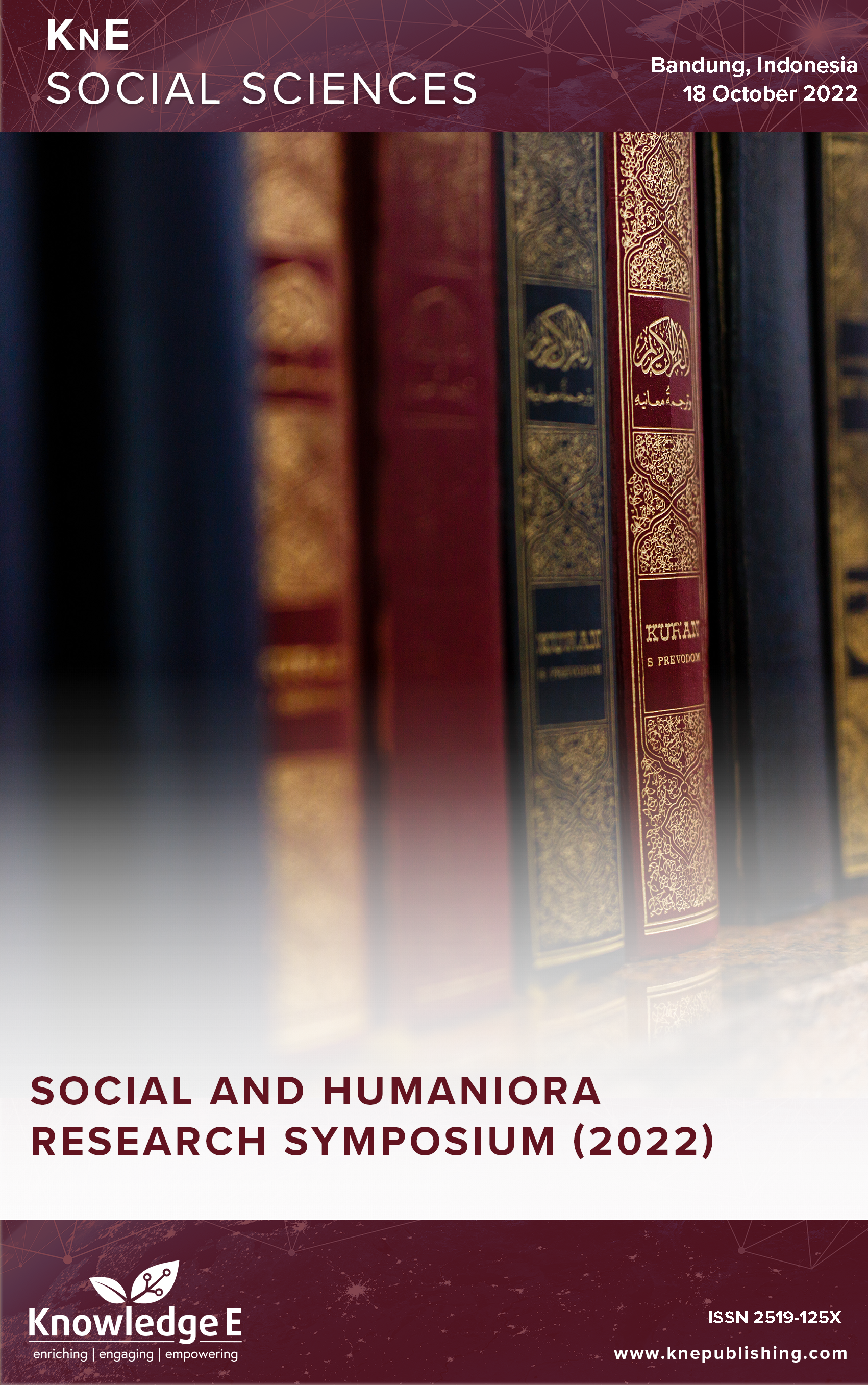Construction of BPJS National Health Insurance Membership Regulations in Indonesia
DOI:
https://doi.org/10.18502/kss.v8i18.14301Abstract
The issuance of the BPJS National Health Insurance Law was a government effort to enhance the welfare of citizens by making it mandatory for them to become BPJS health insurance participants, with a deadline set for January 2019. However, as of May 2022, around 13.79% (according to Worldometer) or 12.26% (according to the Home Ministry) of citizens have not yet joined, due to various factors, including issues related to the BPJS health insurance membership regulations. This paper aims to provide clarity on the construction of health insurance membership regulations as outlined in Law Number 24 of 2011 concerning the Social Security Agency connected to the National Social Security System. The research utilized a descriptive analysis with a statutory approach, along with secondary data obtained through a library study to collect data, and systematic and teleological analysis to analyze the data. The results of the study indicate that the construction of BPJS health insurance membership regulations follows the Stufen theory, which is in accordance with the hierarchy of occupying concrete norms (Hans Kelsen) or formalgezets (Hans Nawiasky).
Keywords: construction, national health insurance, national social security system regulation
References
[2] Mann JM, Gostin L, Gruskin S, Brennan T, Lazzarini Z, Fineberg HV. Health and Human Rights. 1994;1(1):6–23.
[3] George E. “John Harrington and Maria Stuttaford (eds). Global Health and Human Rights: Legal and Philosophical Perspectives * John Tobin. The Right to Health in International Law,” European Journal of International Law. 2013;24(4). https://doi.org/10.1093/ejil/cht072
[4] Perwira I. Memahami Kesehatan Sebagai Hak Asasi Manusia. Jakarta: JURNAL ELSAM; 2014.
[5] Undang-Undang Nomor 24 Tahun 2011 tentang Badan Penyelenggara Jaminan Sosial Nomor 24 Tahun 2011 Pasal 14.
[6] Perpres 82, “Perpres Nomor 82 Tahun 2018 tentang Jaminan Kesehatan Nasional,” Peraturan Presiden Republik Indonesia. 2018. [Online]. Available: https://peraturan.bpk.go.id/Home/Details/94711/perpres-no-82-tahun-2018
[7] I Made Karistiawan. BPJS Kesehatan [Internet]. Bpjs-kesehatan.go.id. 2021 [cited 2021 Sep 22]. Available from: https://bpjs-kesehatan.go.id/bpjs/
[8] Worldometer. Indonesia Population (2019) - Worldometers [Internet]. Worldometers.info. 2022. Available from: https://www.worldometers.info/worldpopulation/ indonesia-population/
[9] Prakoso SB. Efektivitas Pelayanan Kesehatan Bpjs Di Puskesmas Kecamatan Batang. Economics development analysis journal. 2015;4(1):73–81.
[10] Putri NE. Efektivitas Penerapan Jaminan Kesehatan Nasional Melalui BPJS dalam Pelayanan Kesehatan Masyarakat Miskin di Kota Padang. Tingkap. 2014;10(2):175– 189.
[11] Erniaty E, Harun H. Understanding the impacts of NPM and proposed solutions to the healthcare system reforms in Indonesia: The case of BPJS. Health Policy and Planning. 2020 Apr;35(3):346–353.
[12] Hertati D. The effectiveness of the social security provider (BPJS) program in health services at Syarifah Ambami Rato Ebu Hospital, Bangkalan regency. DIA: Jurnal Administrasi Publik. 2021;19(2):143–153.
[13] Nugraheni R, Kirana GR. The analysis quality of service and patient satisfaction participants of health BPJS in interior services in Hospital X of Kediri City. Journal of Global Research in Public Health. 2018;3(1).
[14] Malik AA. Implementasi kebijakan diskresi pada pelayanan kesehatan badan penyelenggara jaminan kesehatan (BPJS). Jurnal Ilmiah Kesehatan Sandi Husada. 2019;8(1):1–8.
[15] Kholis N, Ratnawati A, Farida YN. Customer satisfaction on the performance of social security administrator (BPJS) Health in Central Java, Indonesia. International Journal of Organizational Innovation. 2018;10(4):150–165.
[16] Basuki EW, Herawati NR. Implementasi Kebijakan Jaminan Kesehatan Nasional oleh BPJS Kesehatan di Kota Semarang. Journal of Politic and Government Studies. 2016;5(4):221–230.
[17] Pahlefi P, Herlina N, Manik H. Asas Penyelenggaraan Sistem Jaminan Sosial Nasional Oleh Badan Penyelenggara Jaminan Sosial (BPJS) Kesehatan di Kota Jambi. Wajah Huk. 2021;5(1):195–201.
[18] Sriningsih S. “Penerapan Asas Proposionalitas dalam Kontrak Layanan Kesehatan antara Rumah Sakit dan Badan Penyelenggara Jaminan Sosial (BPJS),” Jurnal Hukum dan Etika Kesehatan. 2021:1-10. https://doi.org/10.30649/jhek.v1i1.11.
[19] Mochtar K. Pembinaan Hukum dalam Rangka Pembangunan Nasional. Bandung: Bina Cipta; 1975.
[20] Bappenas, “Modul Sinkronisasi RPJMD-RPJMN Bidang Kesehatan dan Gizi Masyarakat,” 2017. https://perpustakaan.bappenas.go.id/e-library/
[38] Lynch ME, Education HI. Health Insurance Terminology: A Glossary. Health Insurance Association of America; 1992.
[39] Mundiharno, “Peta Jalan Menuju Universal Coverage Jaminan Kesehatan- Jurnal Legislasi Indonesia. 2012;9,(2):207–222. [Online]. Available: https://ejurnal. peraturan.go.id/index.php/jli/article/view/386/266
[40] Hartono SR. Hukum Asuransi dan Perusahaan Asuransi. 4th ed. Jakarta: Sinar Grafika; 2001.
[41] Purwanto, “Pembaruan Definisi Asuransi dalam sistem Hukum di Indonesia (Insurance Definition Renewal in Law System Um in Indonesia),” Risalah HUKUM Fakultas Hukum Unmul. p. 87, [Online]. Available: https://ejournal. fh.unmul.ac.id/index.php/risalah/article/view/130/80
[42] Thabrany H. Peta Jalan Menuju Jaminan Kesehatan Nasional 2012-2019. Dewan Jaminan Sosial Nasional; 2012.
[43] Muhammad A. Hukum dan penelitian hukum. Bandung: Citra Aditya Bakti; 2004.
[44] Ash, “MK Tolak Pengujian UU SJSN,” 2011 Nov 21.
[45] KK republik Indonesia, “Jaminan Kesehatan Nasional dalam Sistem Jaminan Sosial Nasional,” Kemkes.go.id, 2016. https://siha.kemkes.go.id/portal/files_upload/ BUKU_PANDUAN_JKN_BAGI_POPULASI_KUNCI_2016.pdf

